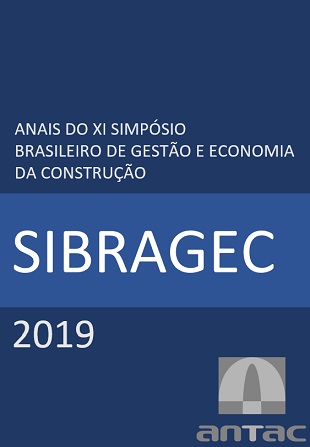Relationship between cost overruns and complexity in engineering projects: a mixed approach
DOI:
https://doi.org/10.46421/sibragec.v11i00.59Palavras-chave:
Cost overruns, Projects complexity, Cluster Analysis, Confidence IntervalsResumo
Currently, cost overrun is a worldwide phenomenon in engineering projects. Severals studies have quantified cost overruns in projects, while others have determined the leading factors of cost overruns. Among these factors, researchers and practitioners have taken an interest in construction complexity. Some authors suggest further analysis of the relationship between project complexity and project success because construction complexity influences decision-making and produces adverse effects on project cost performance. This study aimed at both an alternative mixed analysis of project complexity and cluster analysis of cost performance, based on project data of published studies. This study proposed three levels of complexity, validated by a clustering silhouette coefficient (> 0.7), which indicated the extent of cohesion among projects. Projects related to urban infrastructure development indicated low complexity; projects related to transport infrastructure projects, medium complexity; and projects related to special construction, involving high uncertainty, indicated high complexity. The computed pooled mean of cost overruns suggested that projects with high complexity are prone to have higher cost overruns (25.6%) on average; low complexity projects showed a cost overrun of 8.0% on average, and medium complexity projects showed a cost overrun of 9.0% on average. This evidence leads practitioners to be aware of the complexity and its relationship with cost overruns.

